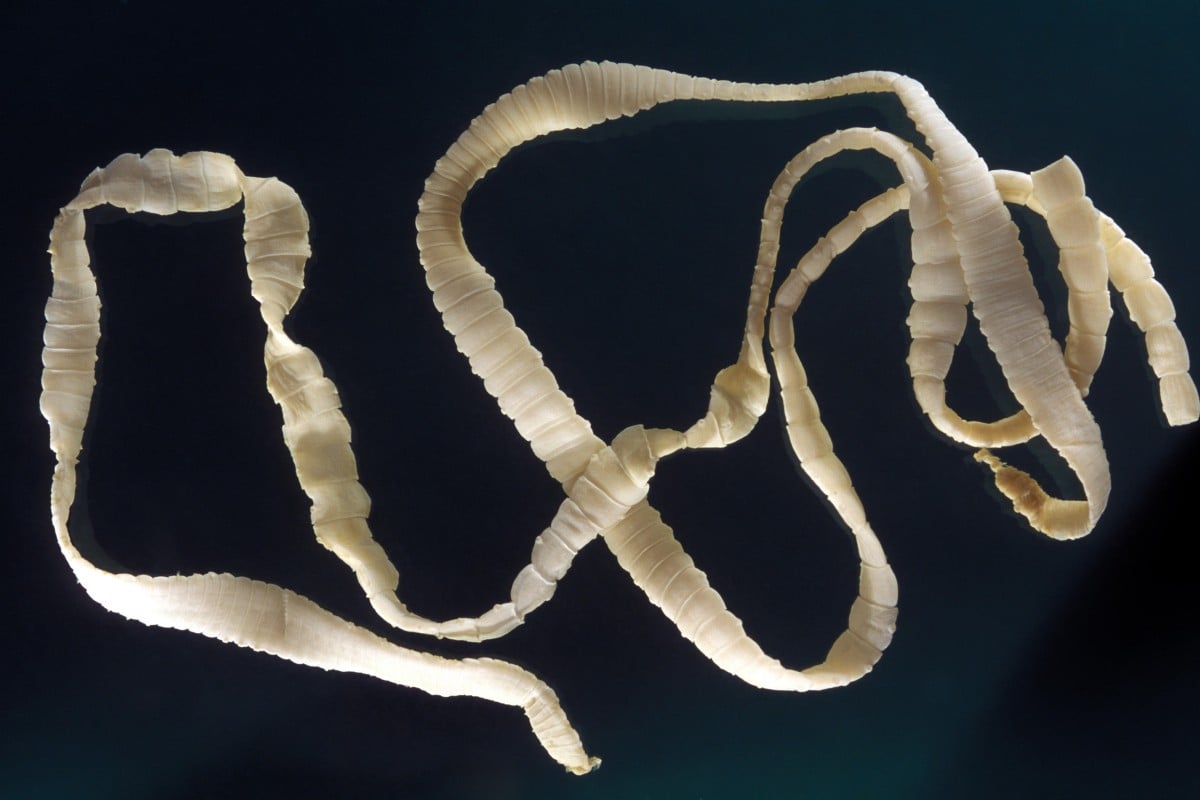
Patient said she was ‘grossed out’, adding she had long been suffering from hallucinations, insomnia and, when managing to sleep, nightmares
 A Taenia solium tapeworm.
A Taenia solium tapeworm. Doctors told Rachel Palma they suspected a lesion on her brain was a tumour, and scans suggested it was cancerous.
Palma, from Middletown, New York state, said she was in shock, unwilling to believe it was true.
In September, scrubbed-up surgeons in an operating room in New York opened Palma’s cranium to look for the tumour, said Jonathan Rasouli, chief neurosurgery resident at the Icahn School of Medicine at Mount Sinai Hospital. But instead, they saw an encapsulated mass resembling a quail egg.
“We were all saying, ‘What is this?’” Rasouli said on Thursday. “It was very shocking. We were scratching our heads, surprised at what it looked like.”
The surgeons removed it from Palma’s brain and placed it under a microscope. They sliced into it and found a baby tapeworm.
“Of course I was grossed out,” said 42-year-old Palma on Thursday. “I was also relieved. It meant that no further treatment was necessary.”
Palma said she had long been struggling with insomnia and, when she could sleep, nightmares. She said she also experienced hallucinations, imagining that things were happening when they were not.
By January 2018, her symptoms had worsened. Palma said she started having trouble holding things, such as cups of coffee, and dropped them.
She started having trouble texting people, so phoned them instead.
She became confused – locking herself out of the house, showing up for work without her uniform and staring at her computer screen, unable to make sense of words. At one point, she said, she called her parents to say the place where she bought her bed years ago suddenly wanted it back.
After doctors appointments and trips to accident and emergency, Palma went to Mount Sinai Hospital where brain experts identified a lesion on her left frontal lobe, near a speech centre.
Rasouli said the lesion’s shape and the way it appeared on the MRI exam led doctors to a grim conclusion: brain cancer.
But upon inspection, Rasouli said it was “clearly not a brain tumour”.
Doctors diagnosed Palma with neurocysticercosis, a parasitic infection in the brain caused by the tapeworm Taenia solium.
Bobbi Pritt, director of the Clinical Parasitology Laboratory in the Mayo Clinic’s Department of Laboratory Medicine and Pathology, said Taenia solium is not common in the US but, when people do become infected, the parasite can present in two different forms. The most common form, she said, is the adult tapeworm, which is ingested from undercooked pork and lives in the gut.
But there’s another, less common way to get the parasite.
People who have the adult form shed microscopic eggs in their stool and, if they do not properly wash their hands, they can pass on the tapeworm to others, Pritt said.
For example, if the person who has the adult tapeworm gets the eggs on his or her hands and then prepares another person’s food, that other person can unknowingly eat the eggs. The eggs then travel to the small intestine, hatch into larvae, penetrate the bowel wall and get into the bloodstream, where they can migrate throughout the entire body, including the brain. The larval form appears as a fluid-filled cyst.
Pritt said the adult form is treated with an antiparasitic medication, but treatment for the larval form can be complex and depends on the location and stage of infection.
“I want people to understand that this was such a rare occurrence,” Palma said. “Every headache is not going to be a parasite.”
She said her symptoms have subsided “almost 100 per cent”. “The best part of my story is it has a happy ending.”